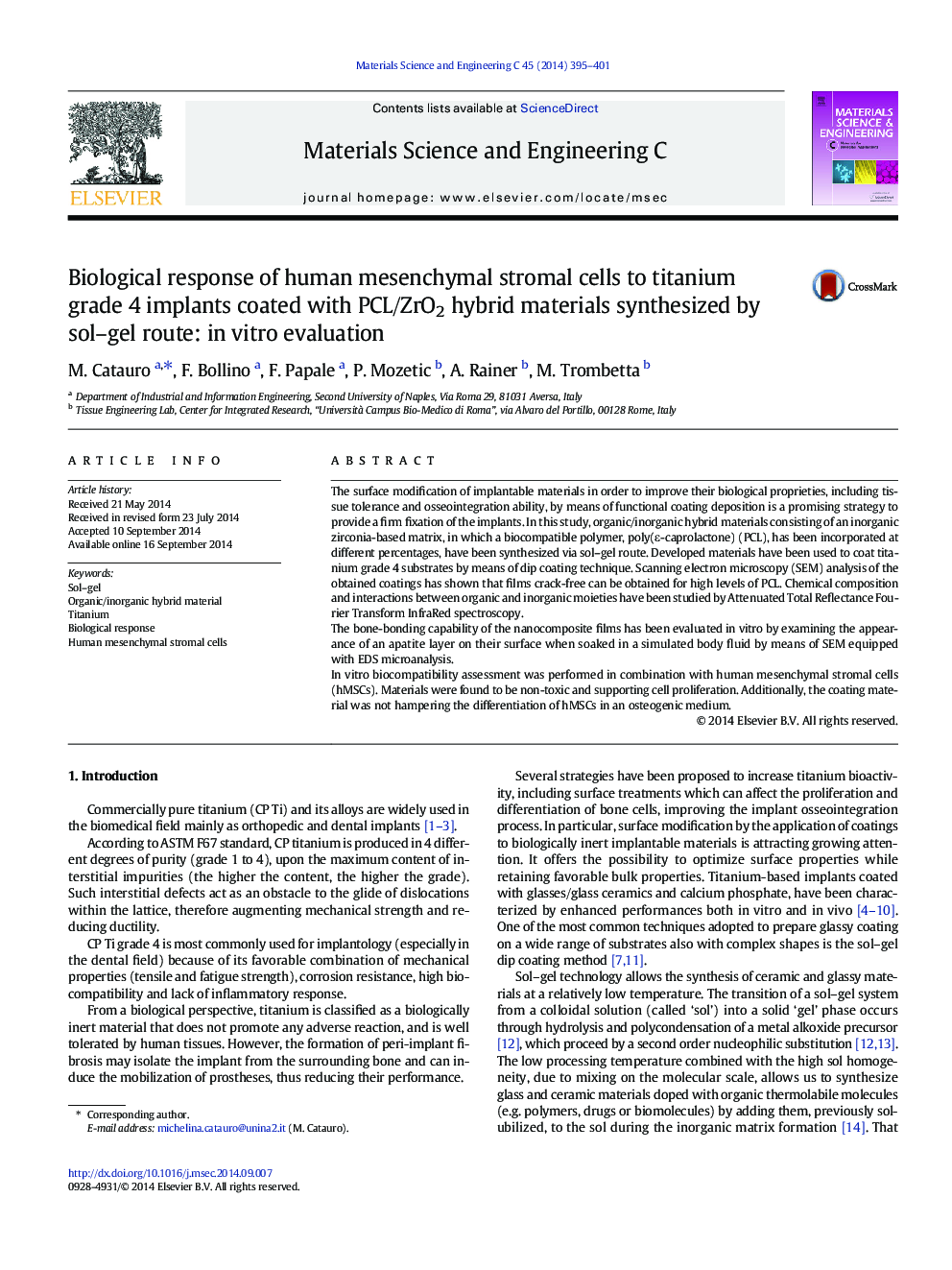| Article ID | Journal | Published Year | Pages | File Type |
|---|---|---|---|---|
| 1428573 | Materials Science and Engineering: C | 2014 | 7 Pages |
•ZrO2/PCL hybrid coatings on Ti grade 4 were obtained by sol–gel dip coating process.•The PCL acts as a plasticizer and allows us to prepare crack-free coatings.•Independent of PCL amount, the films improve the titanium substrates' bioactivity.•The coatings are non-toxic and supportive of cell proliferation at all compositions.•The coatings don't hamper hMSC differentiation in an osteogenic medium.
The surface modification of implantable materials in order to improve their biological proprieties, including tissue tolerance and osseointegration ability, by means of functional coating deposition is a promising strategy to provide a firm fixation of the implants. In this study, organic/inorganic hybrid materials consisting of an inorganic zirconia-based matrix, in which a biocompatible polymer, poly(ε-caprolactone) (PCL), has been incorporated at different percentages, have been synthesized via sol–gel route. Developed materials have been used to coat titanium grade 4 substrates by means of dip coating technique. Scanning electron microscopy (SEM) analysis of the obtained coatings has shown that films crack-free can be obtained for high levels of PCL. Chemical composition and interactions between organic and inorganic moieties have been studied by Attenuated Total Reflectance Fourier Transform InfraRed spectroscopy.The bone-bonding capability of the nanocomposite films has been evaluated in vitro by examining the appearance of an apatite layer on their surface when soaked in a simulated body fluid by means of SEM equipped with EDS microanalysis.In vitro biocompatibility assessment was performed in combination with human mesenchymal stromal cells (hMSCs). Materials were found to be non-toxic and supporting cell proliferation. Additionally, the coating material was not hampering the differentiation of hMSCs in an osteogenic medium.
Graphical abstractFigure optionsDownload full-size imageDownload as PowerPoint slide
